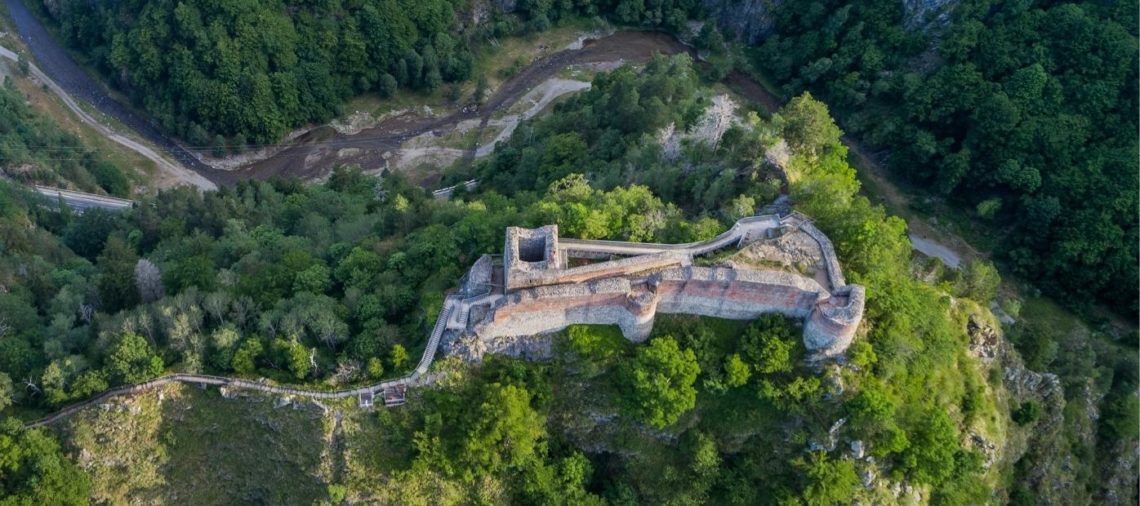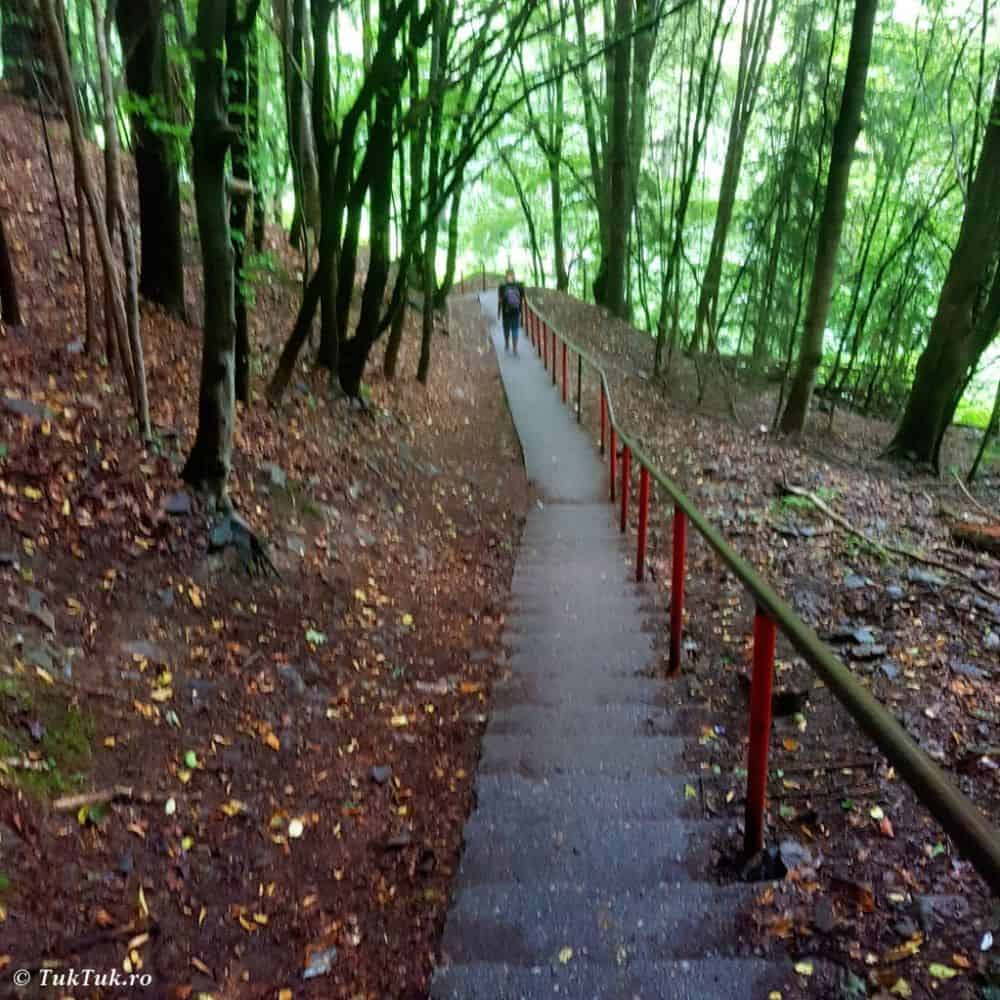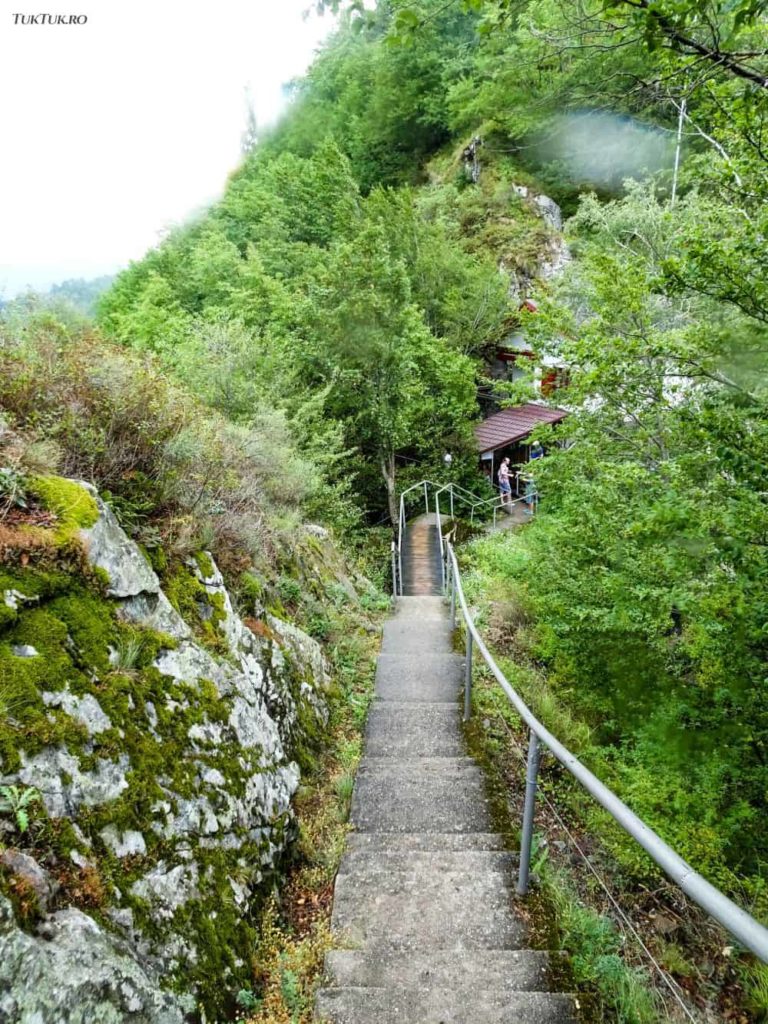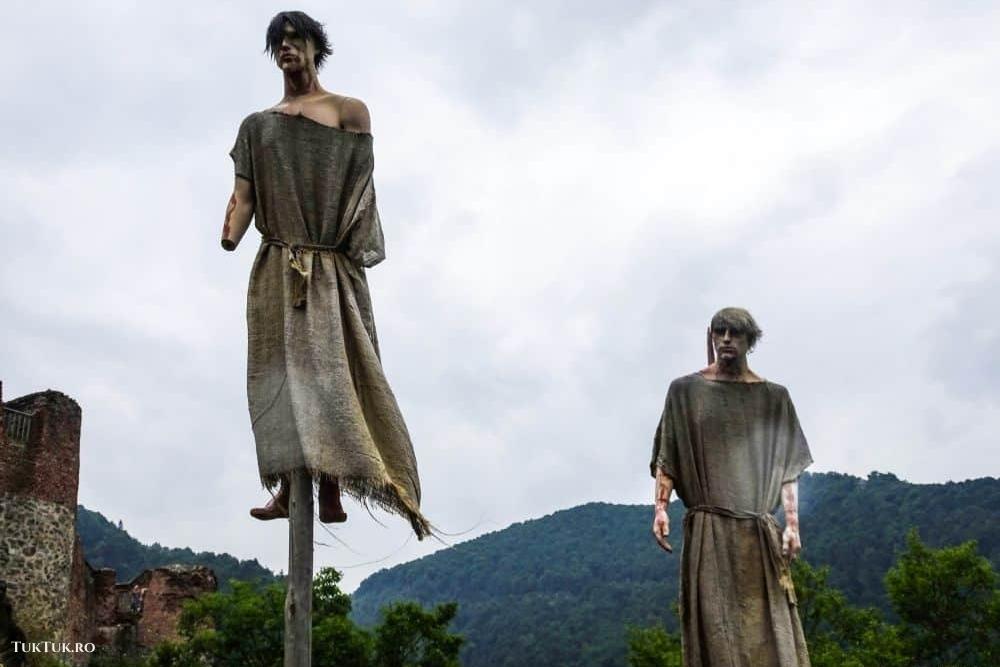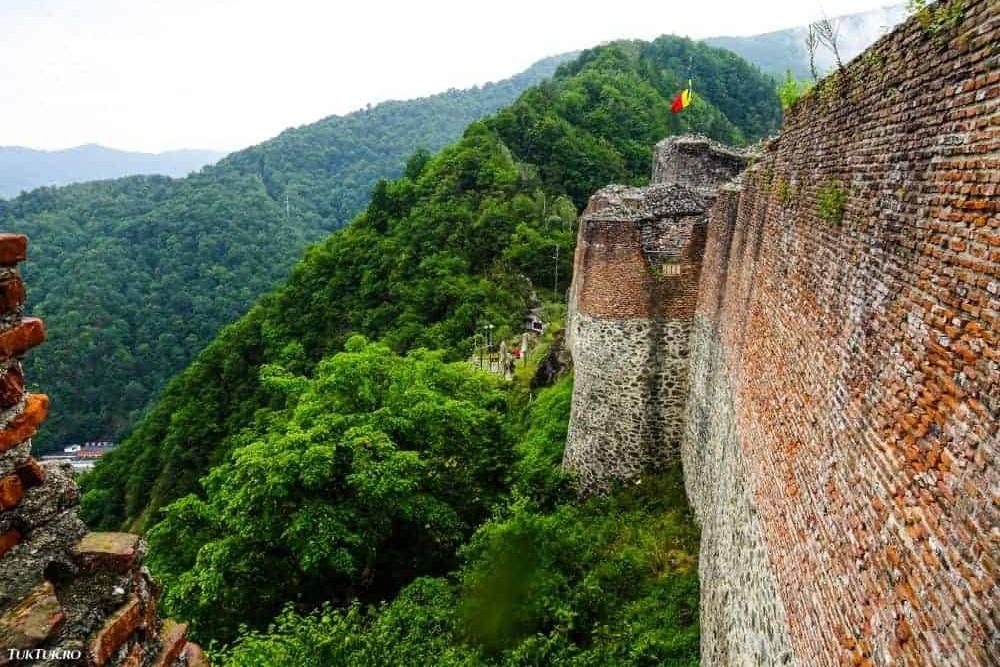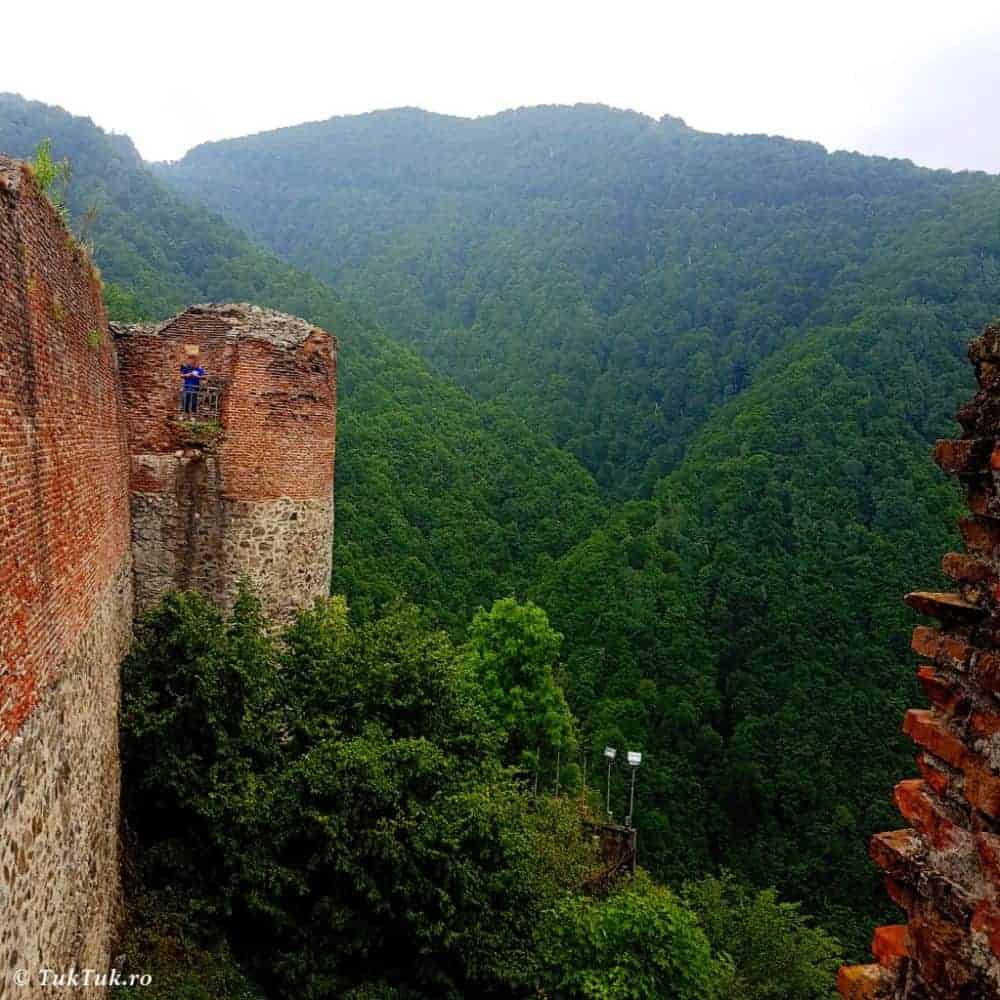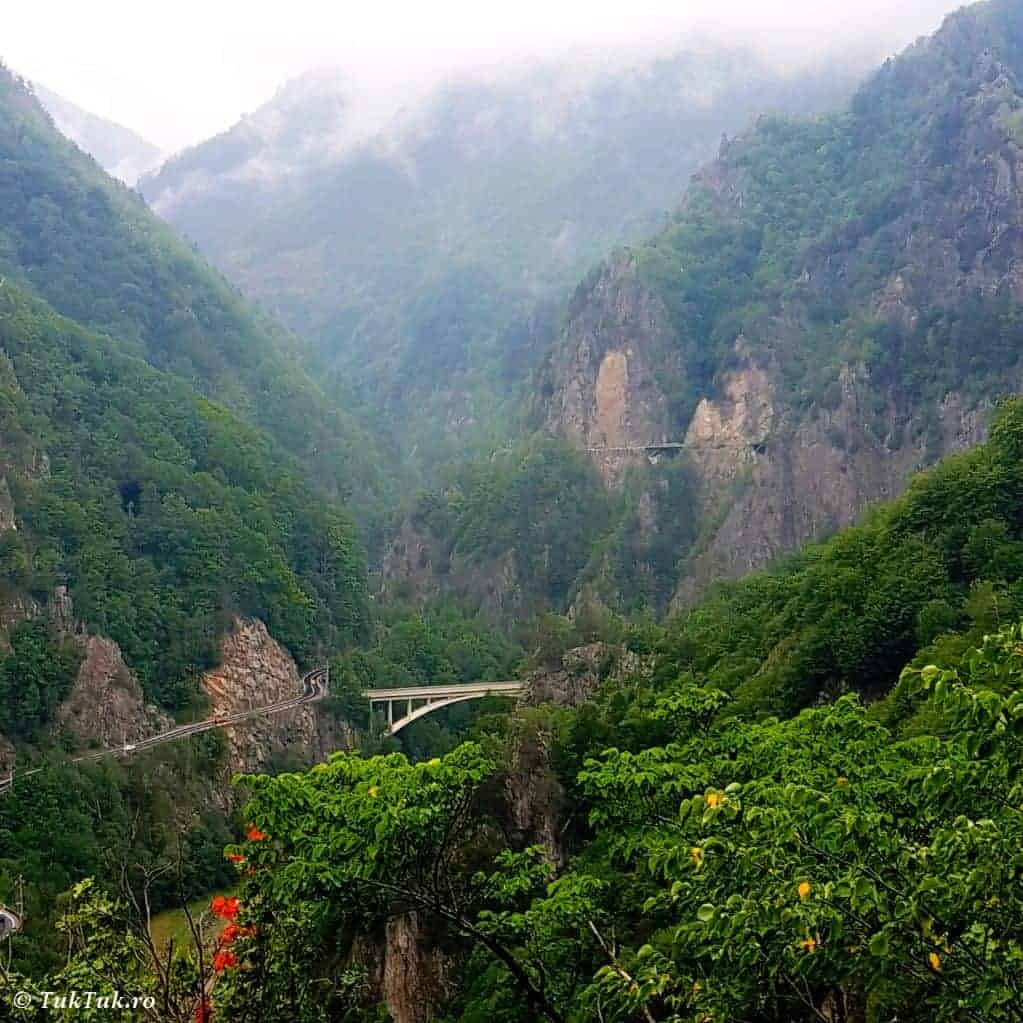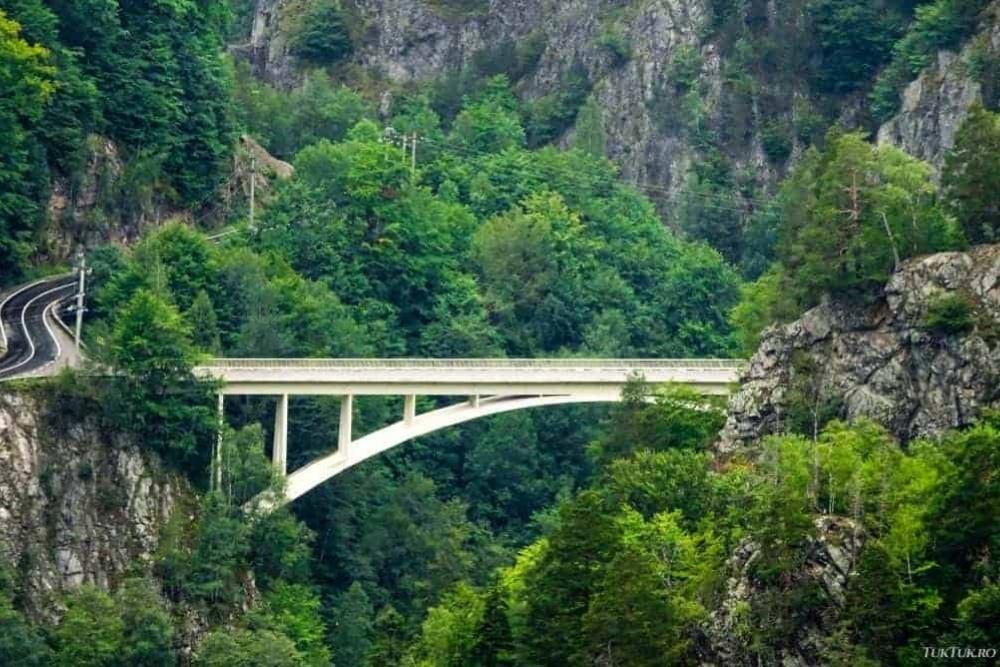If you take a trip on the Romanian magnific Transfăgărăşan road, coming from Curtea de Argeş, after 27 km and 4 km before the Vidraru Dam (near the village Căpățîneni), stop and visit Poenari Fortress. It is one of Romania’s most mysterious and interesting places, placed in a fabulous natural setting for whose beauty you have to spend a little effort. Which you won’t regret.
Consider that you will have to climb no less than 1480 steps to reach Poenari Fortress, which is at an altitude of 850 m, on Cetatuia Mountain. Leave the car on the side of the road (there is a camping and a restaurant) and follow the sign to the fortress, not ignoring the posters related to the presence of bears in the forest (in the spring of 2017, the access was banned for several weeks precisely because of four bears haunting the area, attracted by the garbage left by tourists). The trekking path is not difficult, and the forest you’re going through is beautiful enough to boost the traveler lazy, tired, or… the senior one.
Poenari Fortress, the second residence of Vlad the Impaler
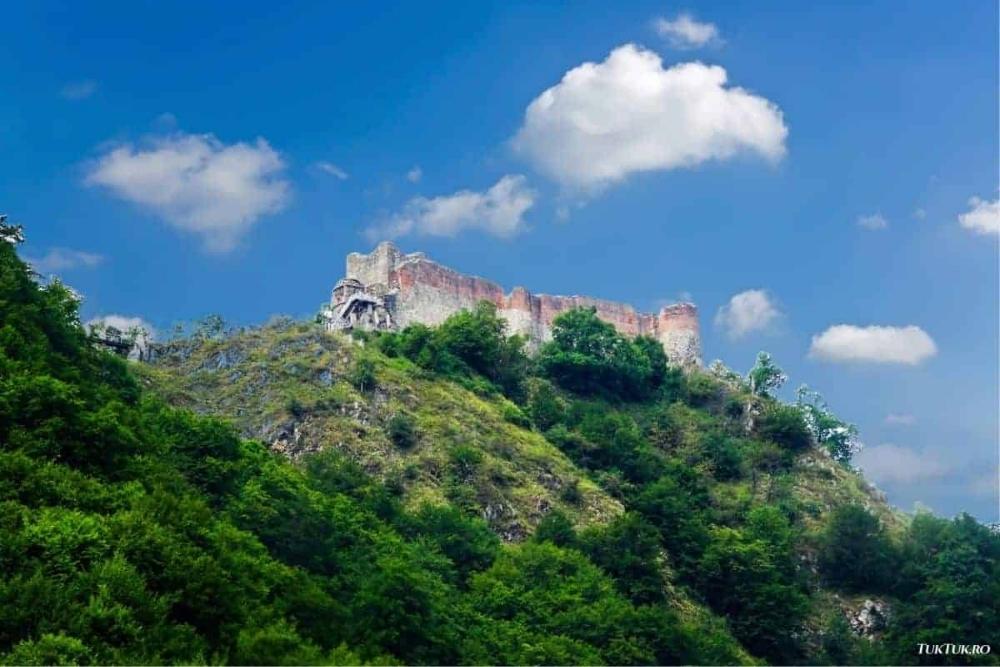
The history of Poenari Fortress begins with Negru Voda, a voivode who raised a tower in the 13th century wanting to extend a defending plan of the northern Walachia. In 1456, Vlad the Impaler discovered the place and decided that such a good location deserves better exploitation. Therefore, he added four more towers, united by solid brick walls, settling his second residence in Tîrgoviște. In fact, Vlad had to restore the initial structure, seriously destroyed by the great earthquake in 1446. There are a lot of legends related to the fortress:
First, he targets the boyars planning to kill him, considering their ruler too harshly as a leader. Which he probably was. Only that Vlad found out about their plan, gathered them in the Gorges of Arges, and forced them to climb and work on the construction of the fortress.
The second one is related to the cunning of the leader, who, during the battle with the Turks in 1462, tricked them by horseshoeing the horses backward, then withdrawing without any problem in the fortress.
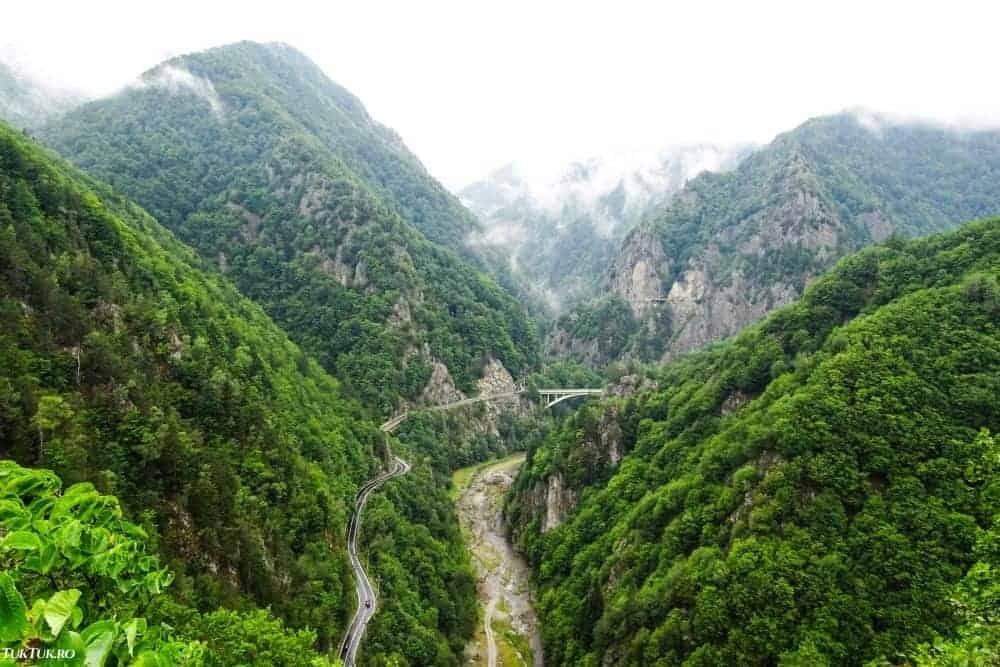
Last but not least, it is said that in the Poenari Fortress killed herself in the same year, 1462, Anastasia, the wife of Vlad the Impaler. Anastasia was the niece of the Polish Queen and committed suicide by throwing herself from one of the fortress’s towers. She got jealously mad discovering that her man wanted to marry Katharina, his mistress from Brasov.
Once you get to the top, you will have to choose between some of the punishments that made the cruel voivode delight. Two impaled Turks and a gallows, a guillotine, and a stump on which an ax with a precise mission rests. Get over the horror details and enjoy the fantastic landscapes that open to Transfăgărăşan and Cheile Argeşului.
The fortress is not restored yet. But the construction works started, there is a rehabilitation project. I saw many Poles, Spanish, French climbing the stairs and marvel at the overwhelming beauty of the landscape, wanting to hear or read more explanations about the walls of the ruined city, which inspired including the famous Jules Verne for his novel, “The Carpathian Castle”. I read that the restoration plan includes a cable car transportation, but we have to wait and see.
The architecture of the citadel is remarkable (even if the northern wall collapsed in the hut following the earthquake in 1915) – it has an elongated shape, following somehow the line of the peak, the walls being erected directly on the rock. When you go up to the fortress and see where it was built, you think it was almost impossible to be conquered. And by letting your thoughts fly, you can imagine how everyday life unfolded in such a hidden place, in those dark times. Climb the 1480 steps and let history carry you!
You may also like: The Fortified Church of Biertan, in Romania

